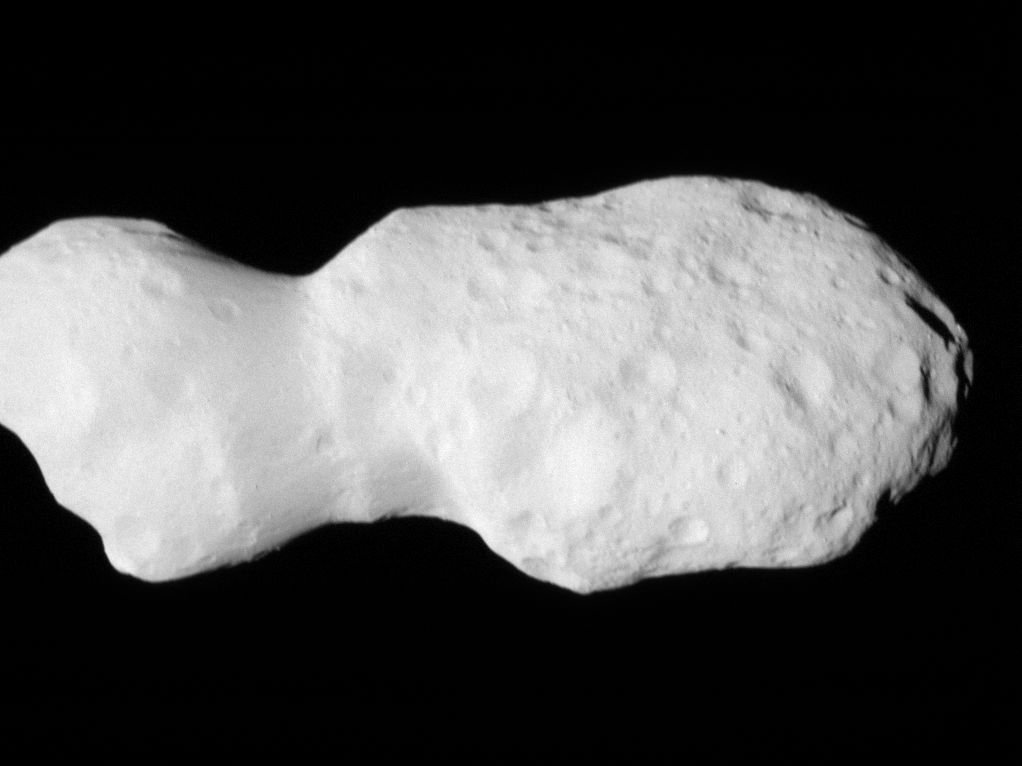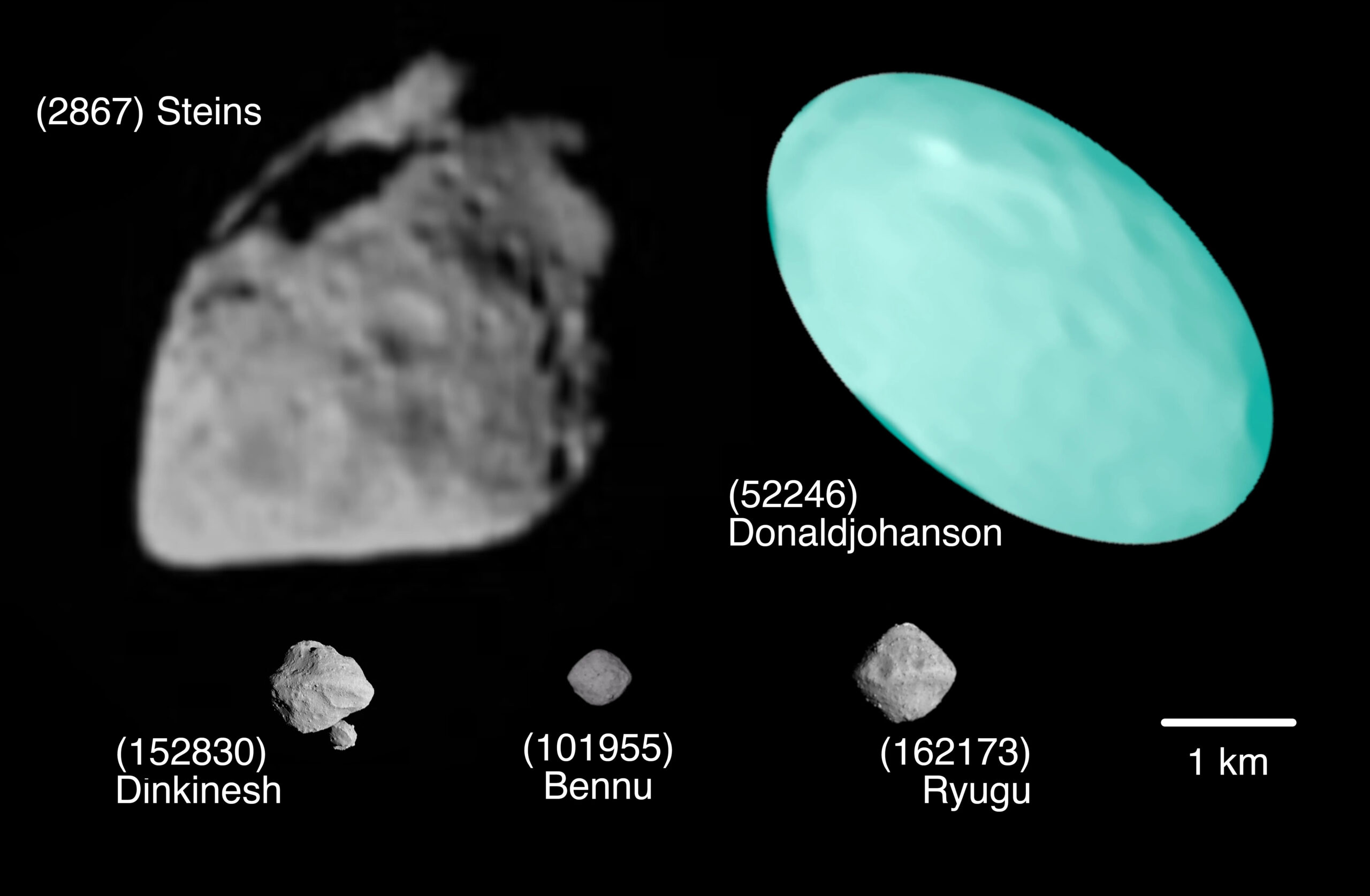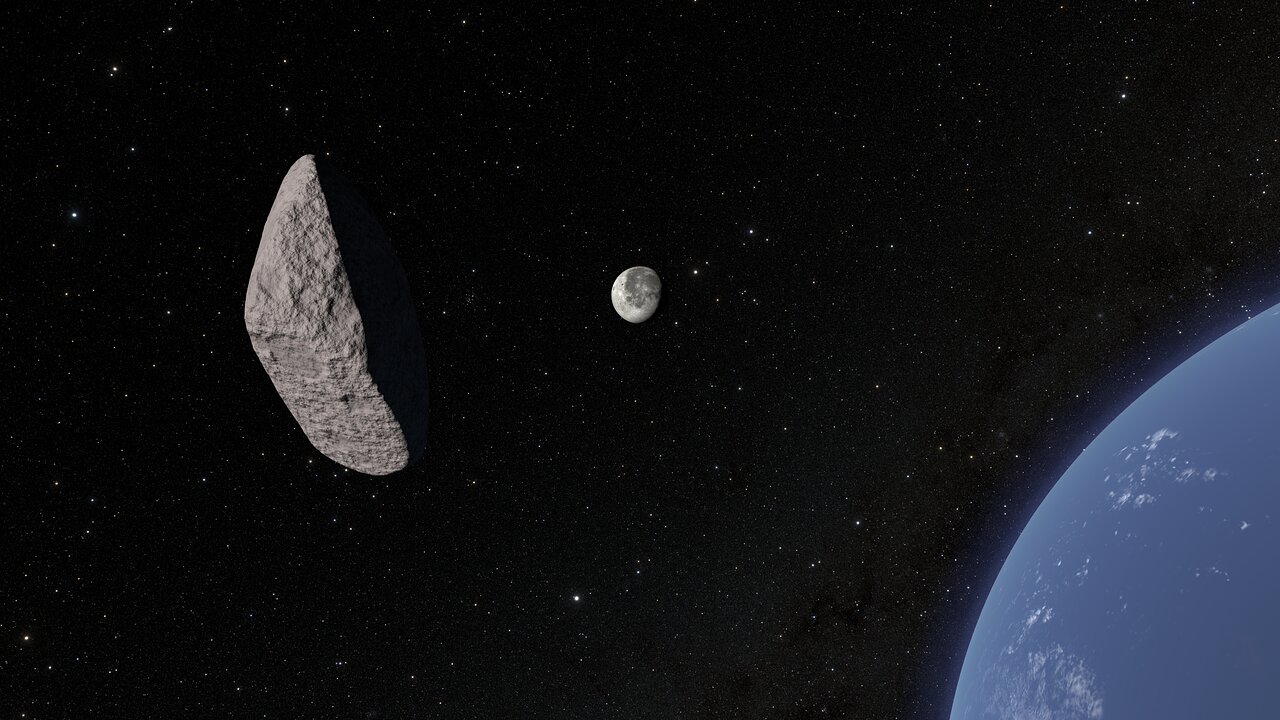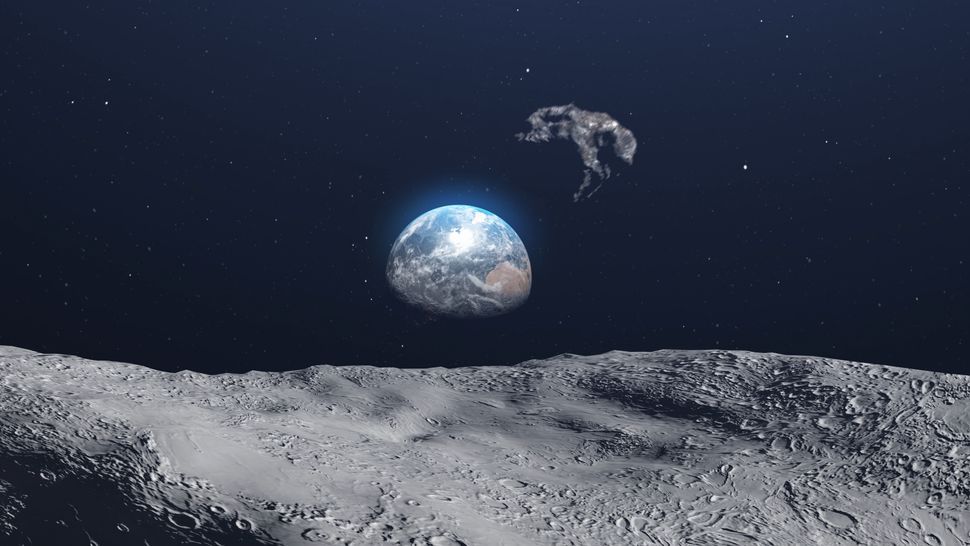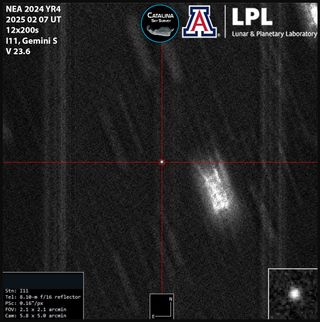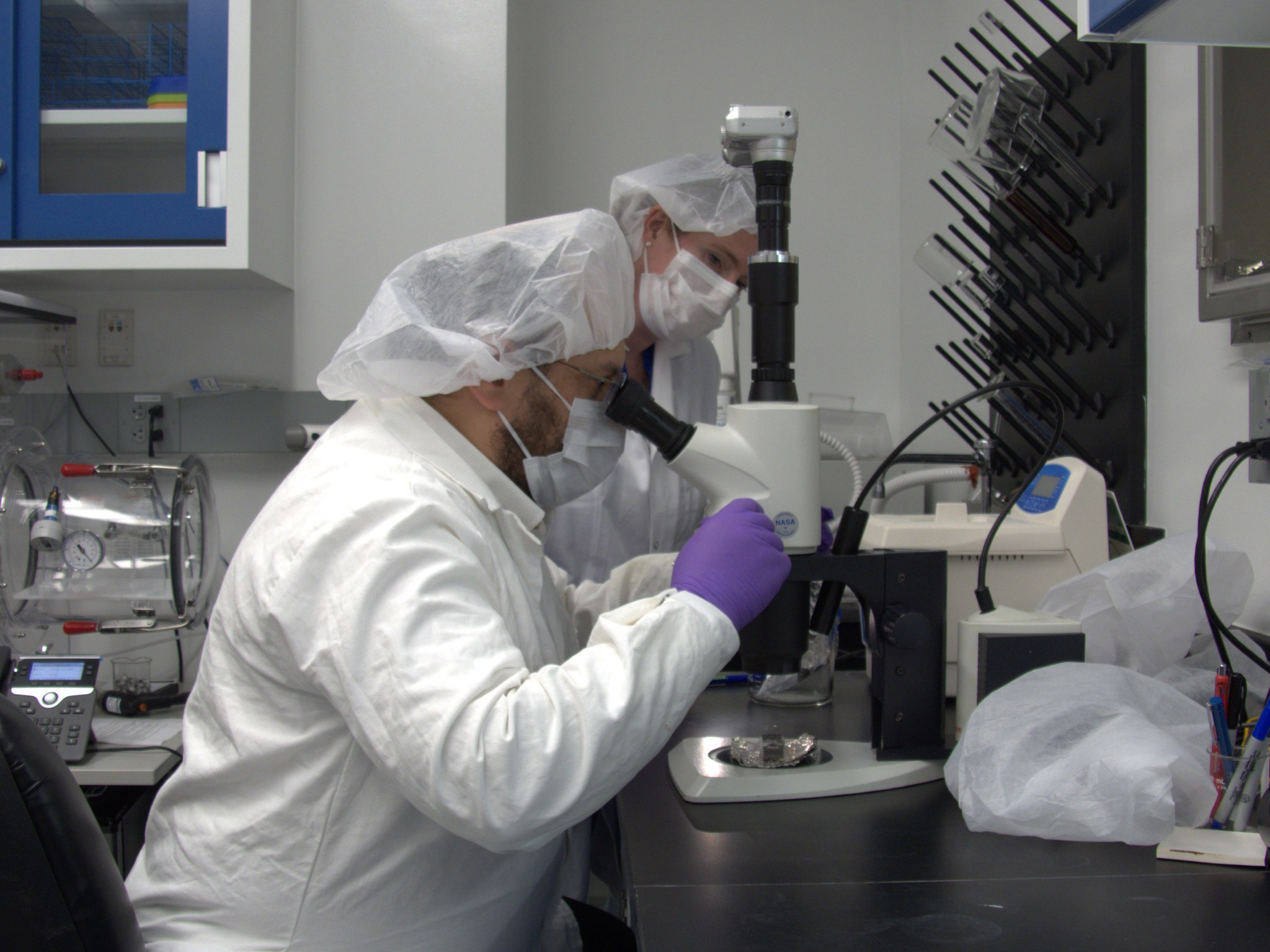4 min read NASA’s Lucy Spacecraft Images Asteroid Donaldjohanson In its second asteroid encounter, NASA’s Lucy spacecraft obtained a close look at a uniquely shaped fragment of an asteroid that formed about 150 million years ago. The spacecraft has begun returning images that were collected as it flew approximately 600 miles (960 km) from the asteroid Donaldjohanson on April 20, 2025. The asteroid Donaldjohanson as seen by the Lucy Long-Range Reconnaissance Imager (L’LORRI) on NASA’s Lucy spacecraft during its flyby. This timelapse shows images captured approximately every 2 seconds beginning…
Read MoreTag: Asteroids
NASA’s Lucy probe will fly by the asteroid Donaldjohanson on Easter Sunday
Easter Sunday certainly won’t be a day of rest for the astronomy community. All eyes will be on NASA’s asteroid-studying Lucy spacecraft, which is due to have a close encounter at 1:51 p.m. EDT (1751 GMT) on April 20, 2025. Launched in 2021, Lucy is on a 12-year journey to the orbit of Jupiter, during which the probe will perform flybys of eight Trojan asteroids in a quest to learn about the origins of the solar system, searching for elements that could spark the rise of life. But before Lucy gets…
Read MoreWe now know the shape of notorious asteroid 2024 YR4 that dominated headlines recently — it’s probably ‘suburban,’ too
The asteroid 2024 YR4 — the one that caused a stir earlier this year due to its potential collision course with Earth — has a surprising tale to tell. A new study reports that this space rock likely hails from the central region of the main asteroid belt between Mars and Jupiter — a cosmic “suburb” scientists don’t typically associate with asteroids that cross paths with our planet. Shortly after its discovery late last year, astronomers calculated that 2024 YR4 had a 1.3% chance (1-in-83) of impacting Earth in December…
Read More‘City-killer’ asteroid 2024 YR4 could hit the moon instead of us, scientists say
An asteroid that’s big enough to wipe out a city has a 1-in-43 chance of hitting our planet in the year 2032. But according to new calculations, there’s an even smaller chance that it might crash into the moon instead. On Feb. 7, NASA scientists increased the likelihood of asteroid 2024 YR4 colliding with Earth on Dec. 22, 2032, nearly doubling the odds from 1.2% to 2.3%. The potentially hazardous asteroid measures an estimated 180 feet (55 meters) across — about as wide as Walt Disney World’s Cinderella Castle is…
Read MoreWhat the asteroid with a 1-in-48 chance of hitting Earth in 2032 looks like (images)
It might not look like much in this image, but this is the asteroid that has made a major news impact in 2025. That’s because this space rock, designated asteroid 2024 YR4, has a 1-in-48 chance of impacting Earth in 2032. For obvious reasons, astronomers are desperate to learn as much as they can about 2024 YR4, estimated to be as large as 177 feet wide (54 meters wide). That’s around as wide as Cinderella’s Castle in Walt Disney World Florida is tall. The image featured here was captured on…
Read MoreNASA’s Asteroid Bennu Sample Reveals Mix of Life’s Ingredients
In this video frame, Jason Dworkin holds up a vial that contains part of the sample from asteroid Bennu delivered to Earth by NASA’s OSIRIS-REx (Origins, Spectral Interpretation, Resource Identification, and Security – Regolith Explorer) mission in 2023. Dworkin is the mission’s project scientist at NASA’s Goddard Space Flight Center in Greenbelt, Maryland. Credit: NASA/James Tralie Lee esta nota de prensa en español aquí. Studies of rock and dust from asteroid Bennu delivered to Earth by NASA’s OSIRIS-REx (Origins, Spectral Interpretation, Resource Identification and Security–Regolith Explorer) spacecraft have revealed molecules…
Read MoreEarth is bombarded with rocks from space — but who gets to keep these ultimate antiques?
Every day, about 48.5 tons of space rock hurtle towards Earth. Meteorites that fall into the ocean are never recovered. But the ones that crash on land can spark debates about legal ownership. Globally, meteorite hunting has become a lucrative business, with chunks of alien rock traded online and shipped between countries. Meteorites hold the key to the mysteries of the universe, but increasingly, significant scientific finds are being lost to private collectors. Last year, New Zealand formally recorded an apple-sized meteorite weighing 810g. It fell on Department of Conservation…
Read MoreNASA to Brief Media on Asteroid Sample Mission Findings
Jason Dworkin, project scientist for OSIRIS-REx at NASA’s Goddard Space Flight Center in Greenbelt, Maryland, views a portion of the asteroid Bennu sample in the center’s astrobiology lab under microscope in November 2023, shortly after it arrived from the curation team at the agency’s Johnson Space Center in Houston. Credit: NASA/Molly Wasser NASA will brief media at 11 a.m. EST Wednesday, Jan. 29, to provide an update on science results from NASA’s OSIRIS-REx (Origins, Spectral Interpretation, Resource Identification, and Security – Regolith Explorer) mission, which delivered a sample of asteroid…
Read MoreNASA’s Planetary Defenders Head to the Sundance Film Festival
Trailer for NASA’s upcoming documentary, “Planetary Defenders,” which will take audiences inside the high-stakes world of asteroid hunting and planetary defense. NASA is bringing the high-stakes world of planetary defense to the Sundance Film Festival, highlighting its upcoming documentary, “Planetary Defenders,” during a panel ahead of its spring 2025 premiere on the agency’s streaming service. “We’re thrilled that NASA is attending Sundance Film Festival for the first time – a festival renowned for its innovative spirit,” said Brittany Brown, director, NASA Office of Communications Digital and Technology Division, at the…
Read MoreNASA’s Webb Reveals Smallest Asteroids Yet Found in Main Asteroid Belt
Illustration of the main asteroid belt, orbiting the Sun between Mars and Jupiter NASA NASA’s powerful James Webb Space Telescope includes asteroids on its list of objects studied and secrets revealed. A team led by researchers at the Massachusetts Institute of Technology (MIT) in Cambridge repurposed Webb’s observations of a distant star to reveal a population of small asteroids — smaller than astronomers had ever detected orbiting the Sun in the main asteroid belt between Mars and Jupiter. The 138 new asteroids range from the size of a bus to the size of a…
Read More